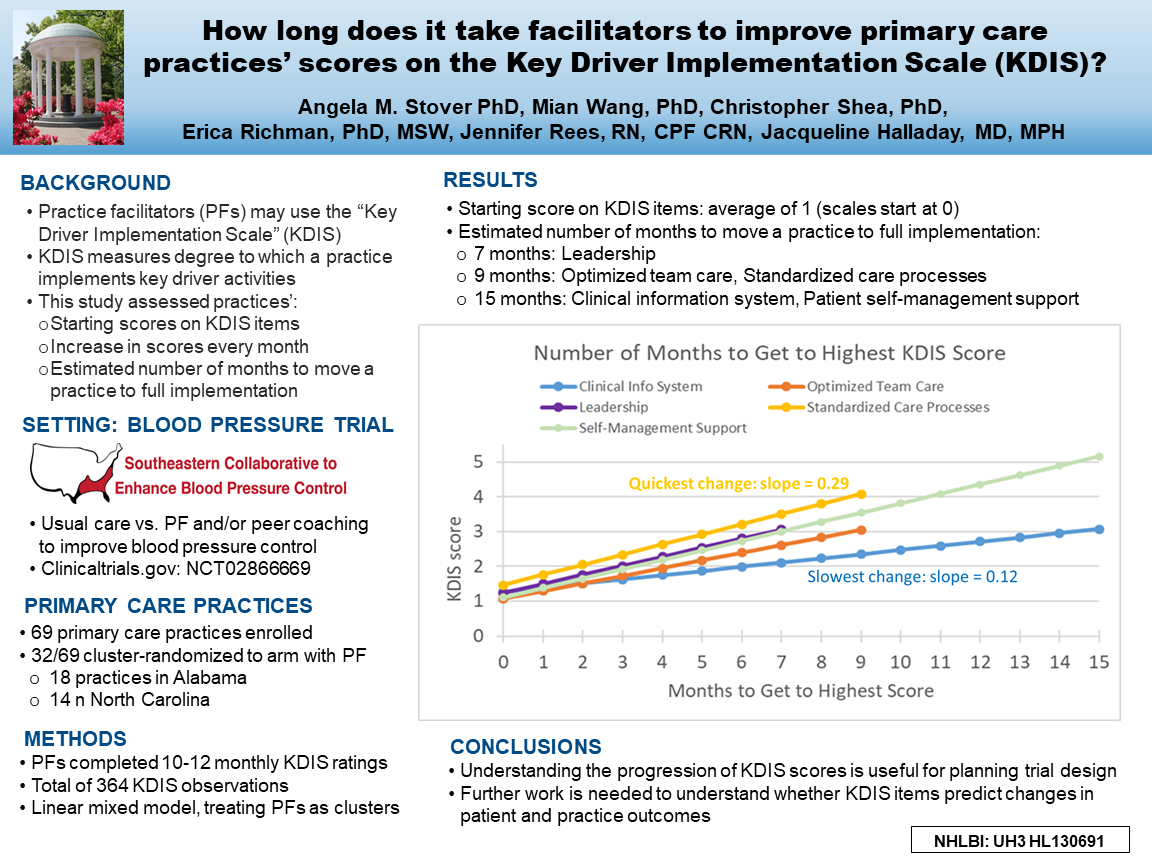PC04: How long does it take facilitators to improve primary care practices’ scores on the Key Driver Implementation Scale (KDIS)?
Angela Stover, PhD; Mian Wang; Chris Shea, PhD; Jennifer Rees, RN, CPF; Erica Carroll, MSW; Jacqueline Halladay, MD
Abstract
Setting: We analyzed KDIS items in a trial involving 18 primary care practices in Alabama and 14 in North Carolina. The trial compared practice facilitation and peer coaching to improve blood pressure control for Black patients (clinicaltrials.gov # NCT02866669).
Methods: The KDIS assesses 5 constructs (1 item per construct) on ordinal scales: clinical information systems; standardized care processes; optimized team care; patient self-management support; and practice leadership support for quality improvement. We examined whether KDIS items showed a statistical trend of increasing scores with a linear mixed model, treating PFs as clusters.
Results: Out of 69 practices enrolled, 32 primary care practices were cluster-randomized to a trial arm with practice facilitation. PFs completed 9-12 monthly KDIS ratings for 32 practices, yielding a total of 364 observations. All KDIS items showed a statistically significant linear trend where scores increased by month. For all 5 KDIS items, the average starting score for practices was 1 with a range from 1.068 for optimized team care to 1.467 for standardized care processes. For each KDIS item, the increase in score every month ranged from 0.117 for clinical care processes (slowest change) to 0.294 for standardized care processes (quickest change). The estimated time to move a practice to the highest score was 7 months for leadership, 9 months for standardized care processes and optimized team processes, and the longest interval was 15 months for clinical information system and self-management support. Two of the KDIS items, clinical information systems and standardized care processes, started to show strong effects around Month 5 where the highest response categories were used, and by Month 12, 94% and 97%, respectively, of PF ratings were in the highest category.
Conclusions: Understanding the progression of KDIS scores is useful for planning PF efforts and informing trial design. Further work is needed to understand whether KDIS items predict changes in patient and practice outcomes.

Gillian Bartlett (NACRG President)
gillian.bartlett@health.missouri.edu 8/5/2021Very interesting results back by a rigorous analytic approach. I hope to see more of this work.